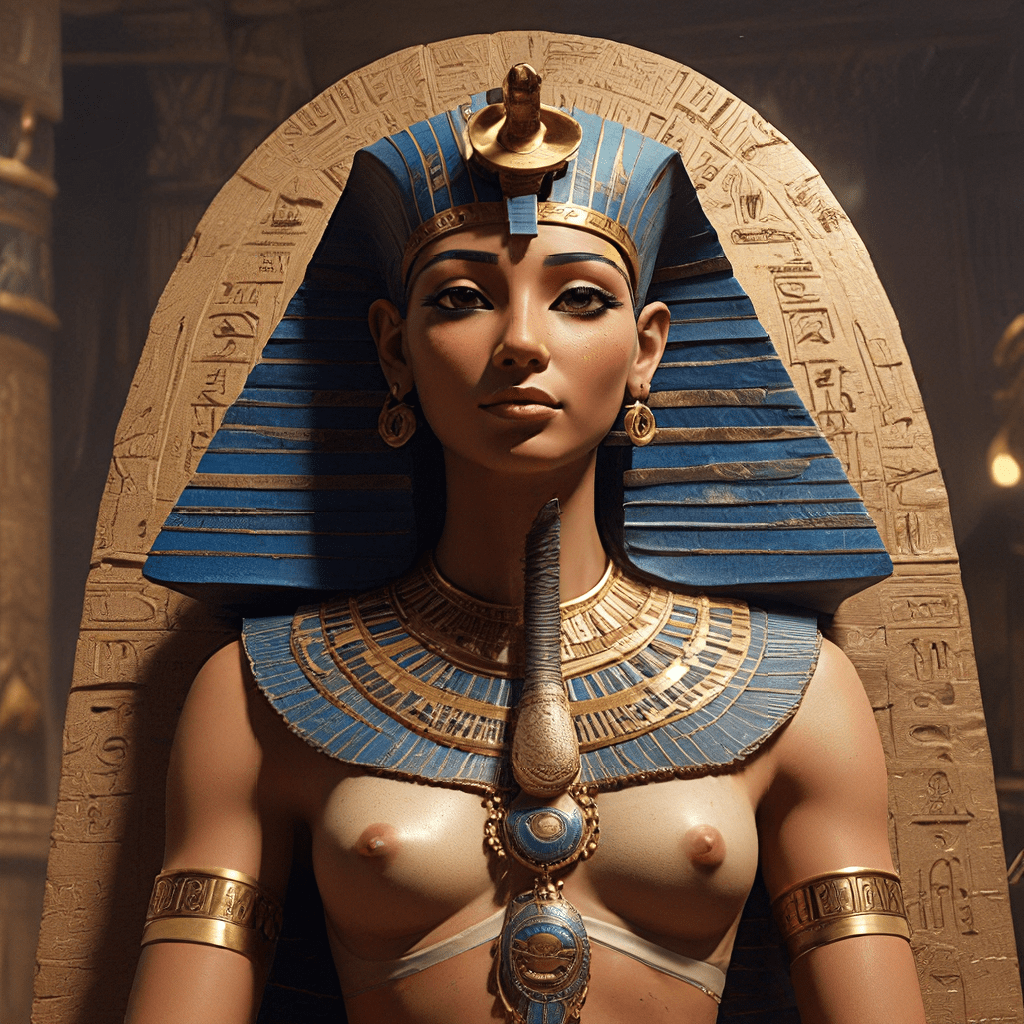The Power of the Gods: Understanding the Roles of Deities in Egyptian Cosmology
1. Introduction: The Divine Order in Ancient Egypt
In ancient Egypt, gods and goddesses were more than just mythical figures; they were the very fabric of existence. Their power permeated every aspect of life, from the creation of the universe to the daily routines of the people. The Egyptian concept of Ma’at, a cosmic order that ensured harmony and balance, was intricately linked to the divine. This order, represented by a feather, was maintained by the actions of the gods. The Egyptians believed that the gods ensured the cyclical nature of time, marked by the annual flooding of the Nile River, the sun’s journey across the sky, and the cycles of life, death, and rebirth.
2. Creation and the Cosmic Forces: The Role of the Ennead
The Heliopolis creation myth, one of the most prominent in Egyptian cosmology, tells the story of the Ennead, a group of nine major deities who shaped the universe. Atum, the self-created god, emerged from the primordial waters, bringing forth the world. From Atum came Shu, the god of air, and Tefnut, the goddess of moisture. Together, they gave birth to Geb, the god of earth, and Nut, the goddess of the sky. Geb and Nut then produced Osiris, Isis, Seth, and Nephthys, who came to play significant roles in the Egyptian pantheon. Their interactions, their struggles and alliances, were seen as the forces that molded the universe, its elements, and its fundamental laws.
3. The Sun God Ra: The Life-Giving Force
Ra, the sun god, was considered the ultimate source of life and light. His daily journey across the sky, from sunrise to sunset, was a vital part of Egyptian cosmology. The Egyptians saw Ra’s movements as a metaphor for the cycle of life, death, and rebirth. Ra was often depicted as a falcon-headed god with a solar disk on his head. He was also associated with other deities, like Atum, the creator god, Khepri, the scarab beetle god of creation, and Re-Horakhty, the sun god at its zenith. These various aspects of Ra highlighted his multifaceted nature.
4. The Underworld and the Cycle of Death and Rebirth: Osiris and Anubis
The Egyptian underworld, known as the Duat, was a complex and mysterious realm where the souls of the deceased embarked on a journey to the afterlife. Osiris, the god of the underworld, presided over this realm. His association with death was not solely a negative one; he also represented the cycle of rebirth. After being murdered by his brother Seth, Osiris was resurrected by his sister-wife Isis, becoming the king of the underworld and a symbol of hope for a new life after death. Anubis, the jackal-headed god of mummification and the afterlife, was also intricately linked to the underworld. He guided souls through the underworld, prepared them for judgement, and weighed their hearts during the ritualistic weighing of the heart ceremony.
5. The Divine Family: Isis, Horus, and Seth
The divine family, with its intricate relationships, played a significant role in shaping the Egyptian world. Isis, the goddess of magic, healing, and motherhood, was a powerful and multifaceted deity. She was known for her wisdom, her ability to heal the sick, and her fierce protection of her son, Horus. Horus, the falcon-headed god of kingship, was believed to be the son of Osiris and Isis. He was a symbol of divine power, order, and royalty. Seth, the god of chaos, storms, and deserts, was also part of this divine family. He was often portrayed as the antagonist of Horus, representing the forces of darkness and disorder. The complex relationships between Isis, Horus, and Seth highlighted the themes of love, loss, revenge, and the struggle for power, making them important characters within Egyptian mythology.




